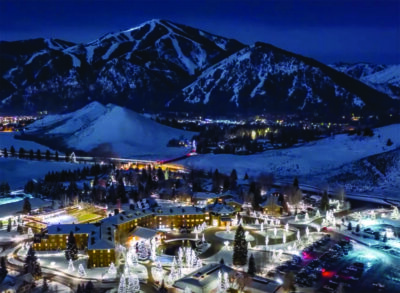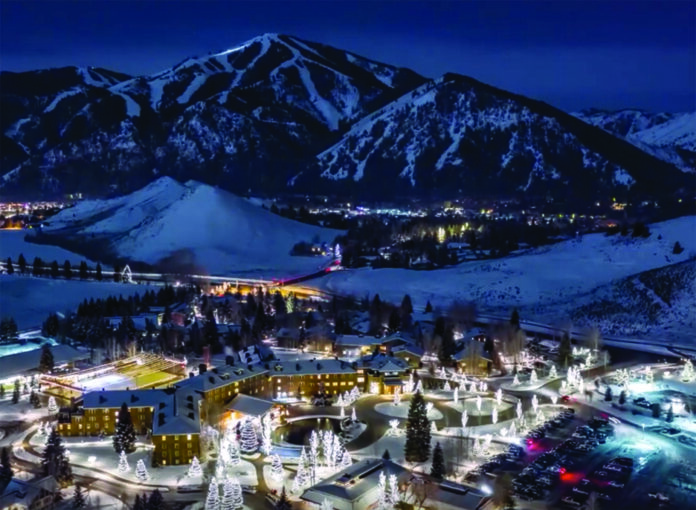BY ERIC VALENTINE

There’s an inherent—and perhaps sometimes overlooked—irony in scenic-heavy, resort-friendly towns. People come to take in the beauty and commune with nature, but all that means creating a carbon footprint on that part of the planet, too. “Environmental impact” is the fancy, bureaucratic term.
As far as Idaho Power and Sun Valley Resort are concerned, leadership there is feeling pretty good these days about their collaborative effort to make that footprint minimal.
“The environment is our livelihood and so we take pride in taking that very seriously,” said Kelli Lusk, the communications manager at Sun Valley Resort. “Having incentives from Idaho Power in place really helps us to deliver on that.”
The incentive programs involve reduced rates when energy-efficient technology is used. In recent years, the resort has used Idaho Power incentives to save 50,000 kilowatt hours (kWh) for its on-mountain lighting. And when a fire damaged the Warm Springs Day Lodge in 2018, it was rebuilt with the latest energy-efficient technology. To date, the utility says, the upgrades to nearly 300 snowmaking guns has saved 1.6 million kWh. In layman’s terms, that’s enough energy to power 127 homes for a year.
“When the technology exists, we’re going to try to use it,” said Jim Snyder, director of Food and Beverage for the resort.
Snyder oversaw the transformation of the Konditorei, the first Dinegreen.com, 3-star certified green restaurant in the ski resort industry. In the rebuild of that kitchen, energy-efficient pizza ovens—among other things—were installed to save on power. But they provide the added benefit of reducing pie-cooking times from 15 minutes to 5 minutes.
“We pay attention to all of that,” Snyder said. “Is it good for us from a labor perspective and does it help the pricing? And does it help the environment?”
Which prompts the personal question: What extra things am I doing to reduce my impact on the natural world?
Not too long ago, I was purchasing all the household and pantry items one must have when setting up a new residence. And I asked myself, “What must I really have?” I decided paper towels and plastic wrap were not must-haves like I always thought. Let me explain.
Washing and reusing kitchen towels and cloth napkins seemed far better for the environment than constantly disposing of dirty paper towels. Food could be saved in glass bowls with lids and food could be wrapped in biodegradable wax paper and recyclable aluminum foil rather than plastic. It’s mid-March now and, for the most part, I’ve stuck to that resolution. I use far less plastic wrap and paper towels than before, but I have since purchased paper towels and plastic wrap. Let me explain.
Constantly using a wash machine isn’t great for the environment, either. And my one roll of plastic wrap every two months isn’t going to make a dent in the mountain of plastic wrap offerings already produced, distributed, and ready-for-sale at every big box market, supermarket or grocery store in America.
But voting for people who are willing to revise the rules on how much plastic can be used in manufacturing or whether there should be a tax on certain environment-unfriendly products is something I can do. Frequenting establishments like the Konditorei, because they are not only doing a little something but they are also letting people know they are doing something, is something I can do. And opening the door to consider other eco-friendly ideas out there is something I can do.
News@woodriverweekly.com is one such door. Each week, this Vision 2020 column explores a particular topic. I’m hoping that in about one month, when the topic is Environment again, it’s your idea that comes through that door.



